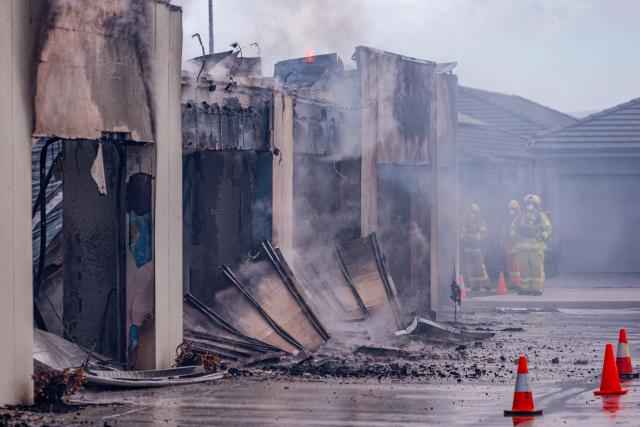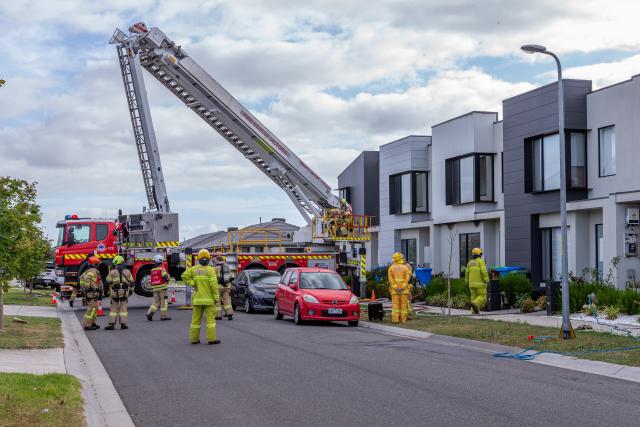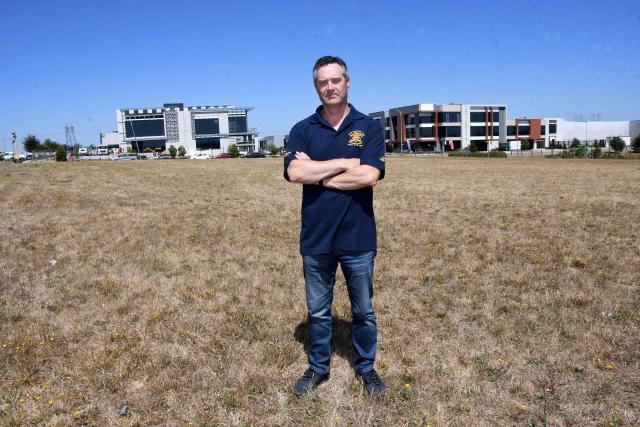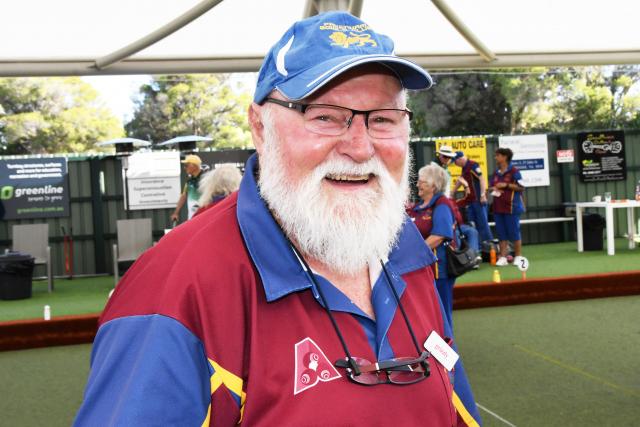A Victorian firefighter union has lashed out at a minister’s claim that the fire rescue for the 3 March Clyde North fire was delivered within the standard time.
A residential fire destroyed eight garages and one townhouse on Spartan Avenue on the morning of Sunday 3 March, one road across the proposed Clyde North Fire Station site.
When Emergency Services Minister Jaclyn Symes was questioned on the absence of the station by Shadow Minister Ann-Marie Hermans in parliament two days later, she responded by saying she was advised that the Clyde CFA tanker arrived first within the Service Delivery Standard (SDS).
“The response from crews was well coordinated and, I am advised, extremely quick,” she said.
United Firefighters Union delegates reached out to Star News and said the response time for the Clyde CFA tanker was 8 minutes 48 seconds, which was 48 seconds longer than the SDS for the Medium Urban area.
According to CFA, response time is measured from when the brigade is alerted to an event to when the first brigade vehicle arrives on the scene.
Star News is in possession of the fire service data extracted from Triple 0 Victoria time stamp chronology, an independent external organisation that is responsible for the communication dispatch of the fire services and could confirm that the Clyde Tanker 1 was alerted at 8:12:14 and arrived on scene at 8:21:02, which amounted to a response time of 8 minutes and 48 seconds.
FRV’s Cranbourne senior station officer and United Firefighters Union delegate Geoff Barker, who attended the fire rescue, said on behalf of the union that they were really quite surprised that the minister was saying in parliament that this fire met service delivery timeframes as the time stamp said a different story.
“It [the time stamp] is locked in,” he said.
“I can’t change that. You can’t change that. We can’t change it.
“The time stamp is about Budget Paper No.3. It goes straight to the government for Budget Paper No.3 compliance.”
Mr Barker clarified that when he told Star News last week that the response time was more than 10 minutes, he was referring to the span between the initial Triple 0 call and the arrival time.
He said regardless of how you measured the time frame, the response time should have been less than a minute.
“Had the fire station been built, it [fire rescue] would have likely occurred under 90 seconds and the fire impact would have been significantly reduced,” he said.
Freda, who lost the townhouse her family had been residing in for only two years to the fire, said she felt like it “seemed forever” before she heard the sirens after calling the Triple 0.
She remembered when she called Triple 0, it was mentioned there was a nearby fire station, so she was expecting sirens straight away.
“The firefighters did a wonderful job, and it could have been worse if not for their hard work and putting their lives at risk to do what they have to do,” she said.
“They were there in less than 10 minutes. It probably just feels like such a long time for me because of the panicked state I was in.
“Everything felt longer than how it actually was.”
Out of curiosity, Freda searched for the nearby fire station days later and saw there was a plan for a fire station just one road across her house.
“But that’s been a long-time plan,” she said.
“I was surprised when I read that piece of information.
“I’m not being political or something. I think this party has failed the people of Clyde North because this has been like a plan for the longest time for a fire station to service Clyde North.”
Emergency Services Minister Jaclyn Symes was contacted for comment.









